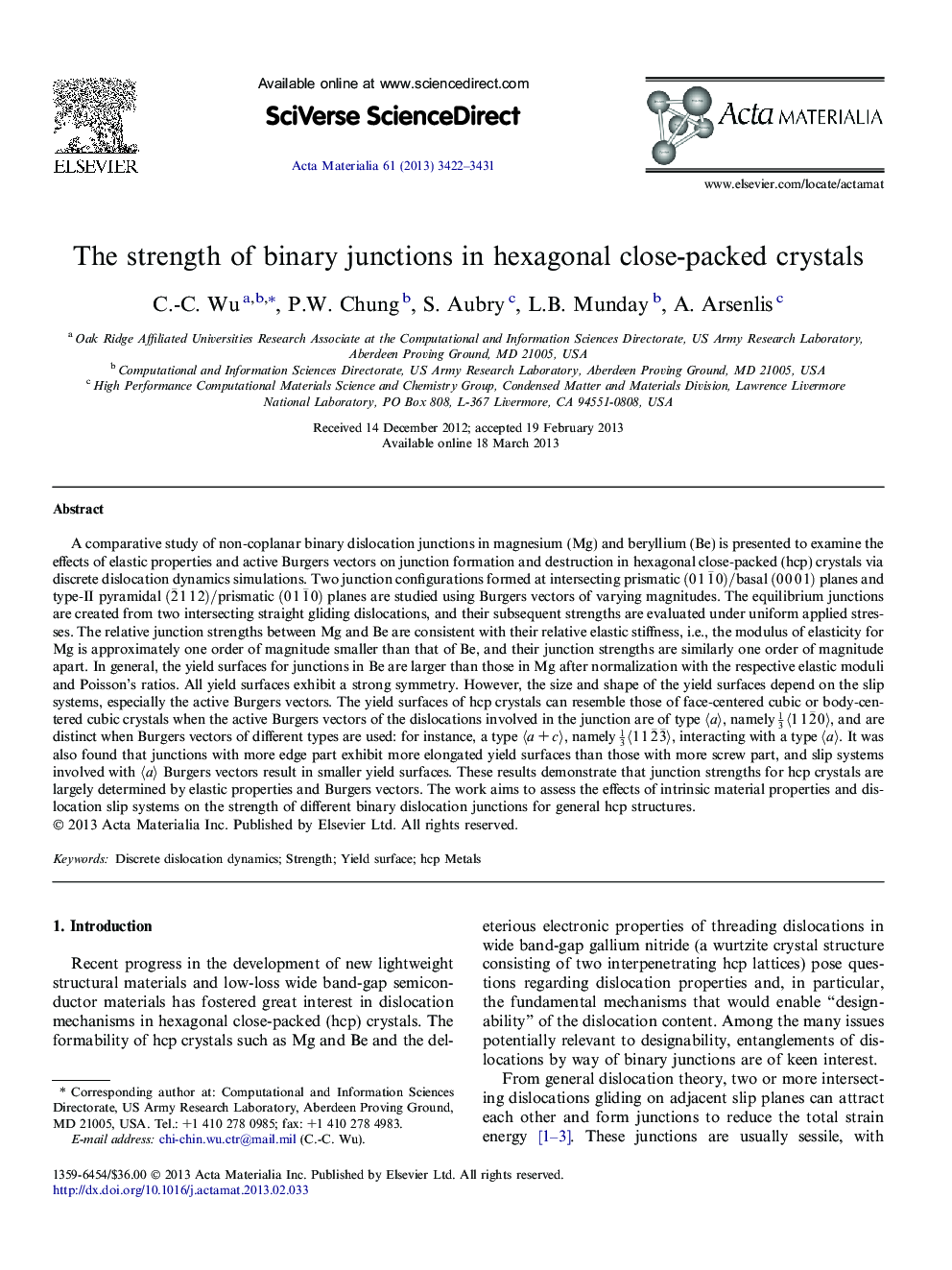| Article ID | Journal | Published Year | Pages | File Type |
|---|---|---|---|---|
| 1446402 | Acta Materialia | 2013 | 10 Pages |
A comparative study of non-coplanar binary dislocation junctions in magnesium (Mg) and beryllium (Be) is presented to examine the effects of elastic properties and active Burgers vectors on junction formation and destruction in hexagonal close-packed (hcp) crystals via discrete dislocation dynamics simulations. Two junction configurations formed at intersecting prismatic (011¯0)/basal(0001) planes and type-II pyramidal (2¯112)/prismatic(011¯0) planes are studied using Burgers vectors of varying magnitudes. The equilibrium junctions are created from two intersecting straight gliding dislocations, and their subsequent strengths are evaluated under uniform applied stresses. The relative junction strengths between Mg and Be are consistent with their relative elastic stiffness, i.e., the modulus of elasticity for Mg is approximately one order of magnitude smaller than that of Be, and their junction strengths are similarly one order of magnitude apart. In general, the yield surfaces for junctions in Be are larger than those in Mg after normalization with the respective elastic moduli and Poisson’s ratios. All yield surfaces exhibit a strong symmetry. However, the size and shape of the yield surfaces depend on the slip systems, especially the active Burgers vectors. The yield surfaces of hcp crystals can resemble those of face-centered cubic or body-centered cubic crystals when the active Burgers vectors of the dislocations involved in the junction are of type 〈a 〉, namely 13〈112¯0〉, and are distinct when Burgers vectors of different types are used: for instance, a type 〈a + c 〉, namely 13〈112¯3¯〉, interacting with a type 〈a〉. It was also found that junctions with more edge part exhibit more elongated yield surfaces than those with more screw part, and slip systems involved with 〈a〉 Burgers vectors result in smaller yield surfaces. These results demonstrate that junction strengths for hcp crystals are largely determined by elastic properties and Burgers vectors. The work aims to assess the effects of intrinsic material properties and dislocation slip systems on the strength of different binary dislocation junctions for general hcp structures.
